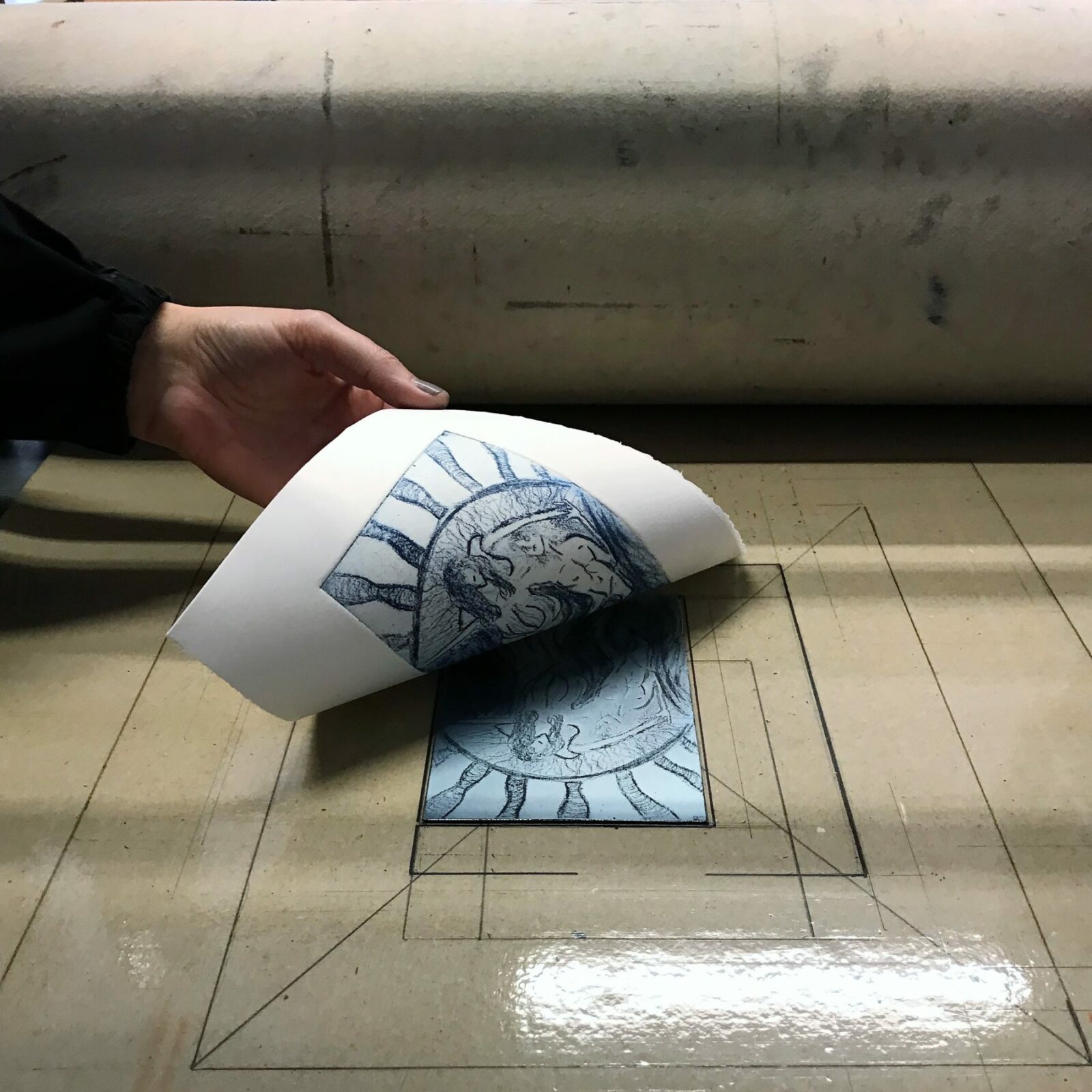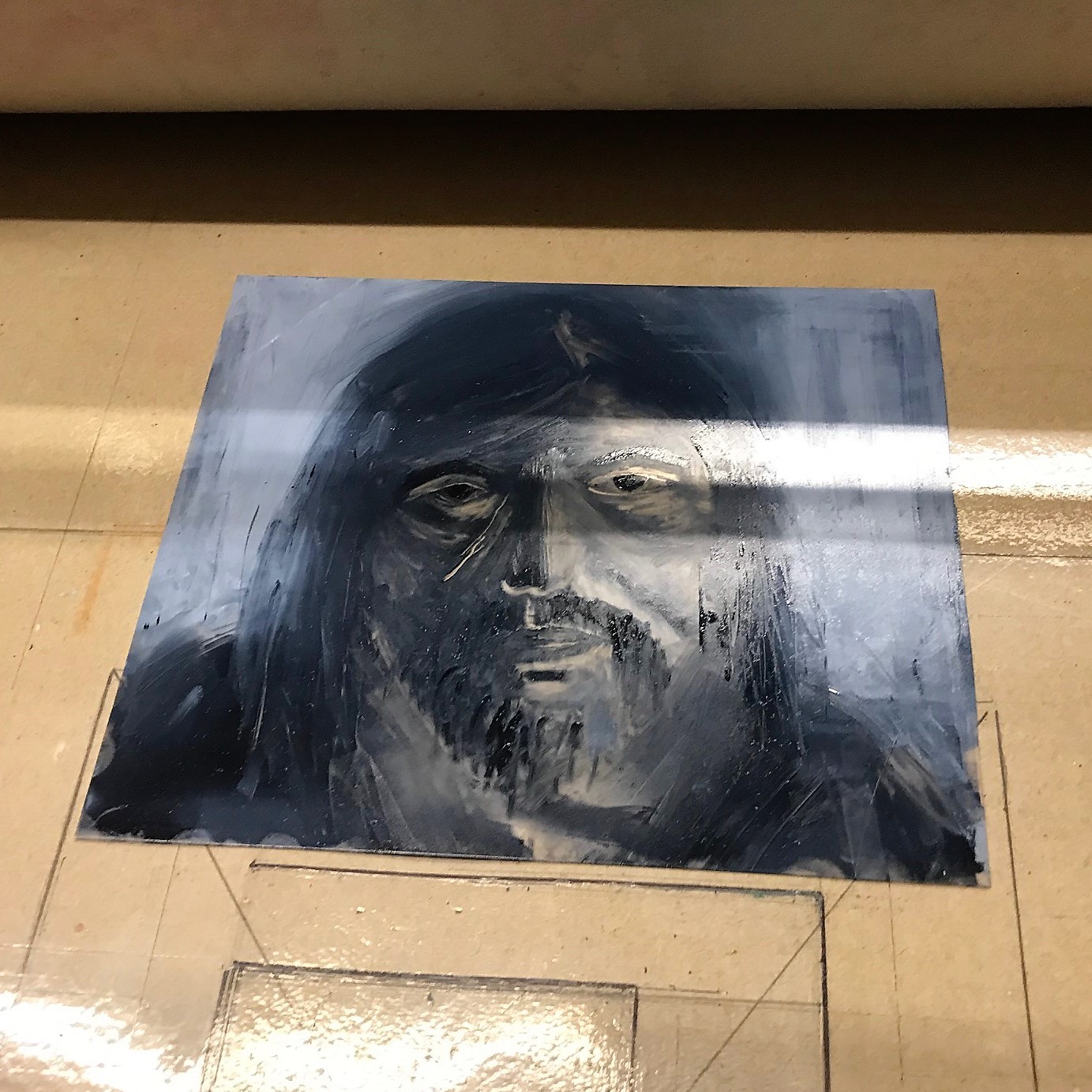Guide to techniques
The term print covers many engraving and printing techniques. To help you discover and understand them, we offer you this short technical guide as well as additional resources. From etching to lithography, from xylography to silkscreen printing, discover the different techniques used by the artists we present to you

Lithography
Lithography is a process that consists of printing the desired pattern from a design made on a limestone.
Etching
Etching is an engraving technique that consists of dipping the plate in acid to make the previously drawn pattern stand out through a chemical reaction.
Aquatinte
Derived from etching, aquatint involves covering the plate with a fine powder before drawing the pattern on it and then dipping it in acid, allowing a wide variety of colours.
Wood engraving (xylography)
Woodcutting, or xylography, consists of engraving its motif on a wooden board with a gouge or chisel before printing it.
Linocut
Linocutting is a technique of engraving in savings size where the pattern is cut on a linoleum plate.
Monotype
This technique consists in obtaining a separately printed printir of an image drawn on a plate.
Silkscreen printing
Screen printing is a printing technique that uses a textile screen and an emulsion that, by reacting to light, allows the reproduction of patterns.
Soft waist and savings size
Intaglio involves depositing printing ink in pre-drawn recesses on the plate, while savings size involves distributing the ink over the surface.
Soft Sharpness: chisel, dry point, black way
These techniques refer to different tools used in an intaglio engraving process, resulting in different processes and results.
Chalcography
Chalcography refers to the various metal engraving processes. The term can be synonymous with intaglio.
Soft Varnish
Soft varnish engraving allows the transfer of a pattern to a plate by means of a line or material imprints.
Zincography
Zincography is an etching process that uses a zinc plate. It is very similar to lithography.












